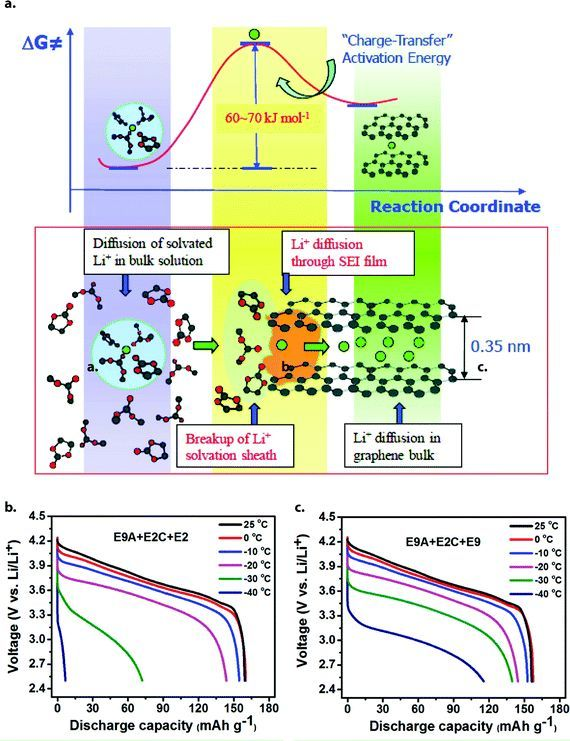Blog
Explore the Power of Lithium Innovation
Stay updated with the latest trends, technologies, and application insights in the world of lithium battery solutions
Search the whole station
Explore the Power of Lithium Innovation
Stay updated with the latest trends, technologies, and application insights in the world of lithium battery solutions
Since entering the market, lithium-ion batteries have gained widespread use thanks to their long lifespan, high specific capacity, and lack of memory effect. However, in low-temperature environments, they face significant challenges such as:
With the expanding applications of lithium-ion batteries, these limitations in cold environments have become increasingly apparent.
At -20°C, the discharge capacity of lithium-ion batteries drops to about 31.5% of that at room temperature. While traditional lithium-ion batteries typically operate between -20°C and +55°C, industries like aerospace, defense, and electric vehicles require normal operation at -40°C. Thus, improving low-temperature performance is crucial.
Several factors limit lithium-ion batteries at low temperatures:

The electrolyte has the most significant influence on cold-weather performance. Its composition and physicochemical properties determine:
At low temperatures, slow ion conduction can lead to lithium dendrite formation on the anode, causing battery failure. Higher electrical conductivity of the electrolyte ensures faster ion transport, improving capacity retention.
Key strategies to improve electrolyte performance include:
Notably, the main limitation in low-temperature performance is increased Li+ diffusion impedance, rather than the SEI film itself.
Layered cathodes, like LiCoO2, Li(Ni,Co,Mn)O2, offer stable 3D structures and fast 1D lithium diffusion channels. Tests show that at -30°C, LiCoO2/MCMB cells drop from 3.762V (0°C) to 3.207V, and total capacity decreases from 78.98 mAh to 68.55 mAh.
LiMn2O4 offers low cost and non-toxicity but suffers from structural instability due to the Jahn-Teller effect of Mn3+. The synthesis method affects electrochemical performance, with high-temperature solid-phase methods yielding higher charge transfer resistance (Rct) than sol-gel methods.
LiFePO4 provides excellent safety and stability but poor low-temperature performance due to low electronic conductivity and lithium-ion diffusion. Its discharge voltage drops significantly at -20°C, but adding nano-carbon conductive agents improves low-temperature behavior. For example:
LiMnPO4 is promising due to high voltage (4.1V) and large specific capacity (170 mAh/g), though lower ion conductivity often requires partial replacement with Fe to form LiMn0.8Fe0.2PO4.
Anode degradation is more severe due to:
These factors contribute to significant low-temperature performance decline in anode materials.

The electrolyte plays a critical role in facilitating Li+ transfer. Key performance indicators include:
Cyclic carbonates like ethylene carbonate (EC) have high dielectric constants and viscosity but provide strong ion conductivity and stable film formation, making them suitable for low-temperature use when mixed with low-melting-point solvents.
Lithium salt concentration affects ion conductivity, but the relationship is parabolic, depending on dissociation and complexation in the solvent.
Key strategies include:
Solid-state lithium-ion batteries, especially thin-film types, show potential to overcome capacity decay and cycling issues in low temperatures, offering a promising alternative to conventional lithium-ion batteries.
A UK–US research team has discovered a way to suppress lithium plating in EV batteries, paving the way for faster charging, longer lifespan, and safer electric vehicles.
View detailsThe wholesale market for 18650 lithium batteries is booming. Discover the key drivers, challenges, and opportunities in supplying high-quality 18650 batteries for electric vehicles, portable electronics, and renewable energy storage.
View detailsShenzhen Apsen Technology Co., Ltd provides reliable standard and custom lithium battery packs for medical devices, energy storage, and agricultural drones. Discover how their high-performance batteries, advanced BMS, and tailored solutions enhanc...
View detailsDiscover how custom lithium battery packs enhance flight time, safety, and efficiency for long-endurance drones. Learn about cell selection, voltage design, structure layout, and advanced BMS integration.
View details
HelloPlease log in